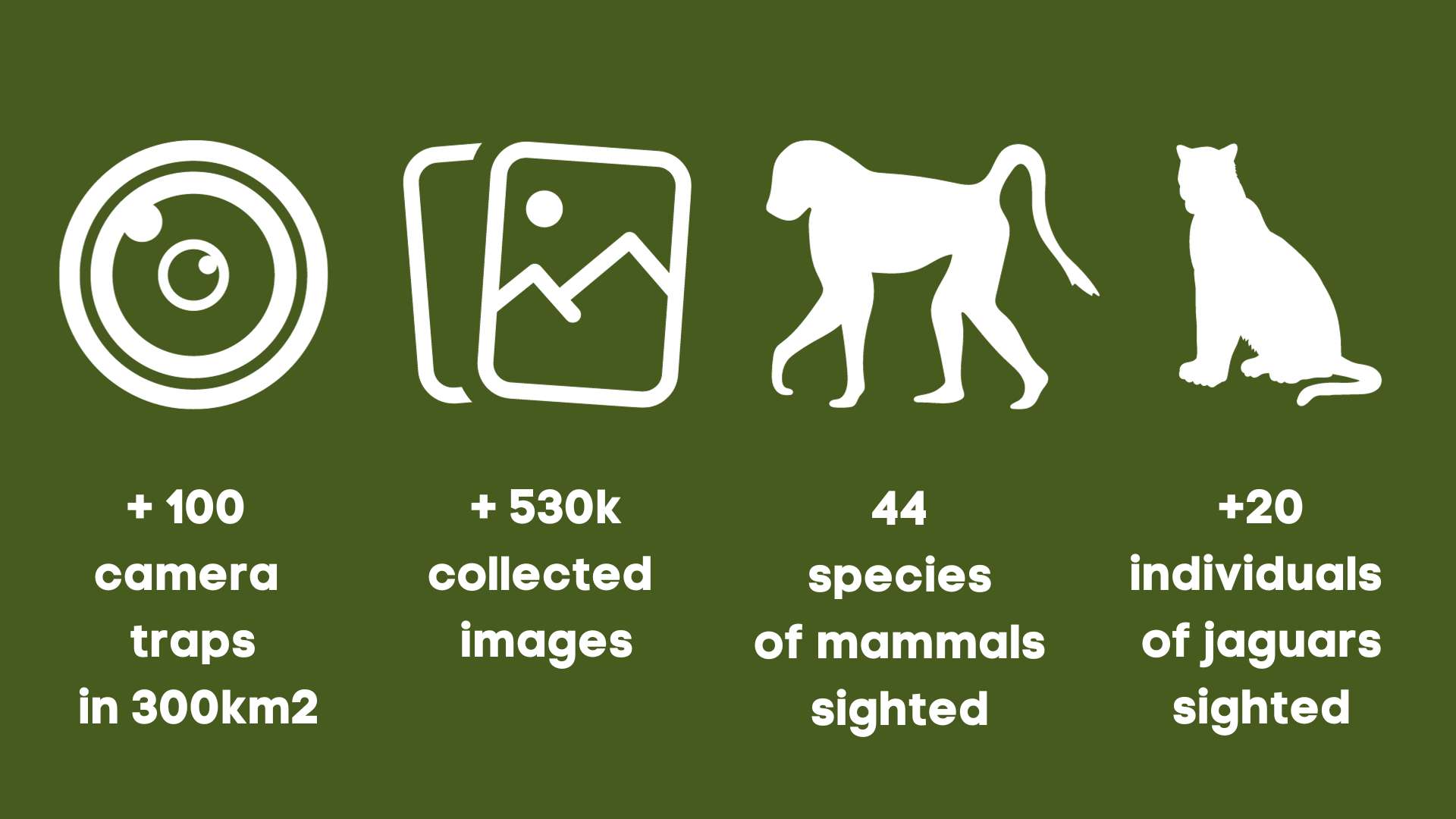Jaguars are a magnificent species, but in-depth research on their populations and movements is still sparse. Our long-term research on jaguars, with plans to keep the project alive for at least 10 years, will give us important information on their birth and mortality rates, their territory size, and their diet.
While the focus of the study remains on jaguars, the large network of cameras, both on the ground level and in the canopy, are triggered by all movement. This allows citizen scientists and researchers from all over the world to study other mammals too, including but not limited to pumas, ocelots, white-lipped peccaries, tapirs, giant anteaters, olingos, sloths, monkeys, and kinkajous. There may well be many species that live exclusively in the canopy, waiting to be discovered.
Begin walking the road to wildlife discovery by logging onto our Zooniverse.org project you can take part in our research and help us conserve the National Reserve of Tambopata in Peru.
With greater knowledge on the biodiversity in the Amazon jungle, you can help us design better arguments to support conservation strategies while providing valuable information to the Natural Protected Areas authorities (SERNANP) to help them assess the efficacy of active conservation strategies and decide if they need to be expanded, revised, or kept active as is.
Come join us in the most biodiverse place on the planet as we conduct the world’s largest long-term study on wildlife, bridging ecotourism, citizen science, biological research, and natural area protection to promote bio-literacy.
